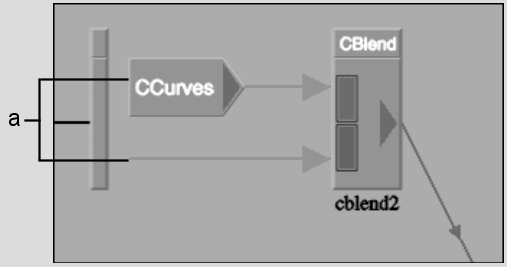Blend nodes include the CBlend (Colour Blend) and MBlend (Matte Blend) nodes.
A blend node is essentially a container that you can use to create a “mini-composite” at different parts of the pipeline. CBlend and MBlend nodes each comprise one or more layers that include the components needed for a composite: a front, matte, and back component. These components are referred to as pipes, and they may contain as many nodes as needed to create the desired image.



(a) The Front and Matte pipes of the blend node constitute one layer.
The back component is not represented visually as it is applied automatically to the composite.
Nodes on the pipes are processed sequentially, with a single input and single output to and from each node. Therefore, you cannot add multiple input nodes that require several clips (such as the Logic Op node) to pipes. However, some multiple input nodes can operate with only one input source. These are the Gmask, Colour Correct, Degrain, and Regrain nodes. If you add one of these node types to a blend node pipe, it is “converted” to a single-input node.
You can animate the curves in the MatteCurves, CBlend, MBlend, Colour Curves, or Result nodes. See Animation.
Use the CBlend node to create a composite that results in a colour image. Use the MBlend node to create a composite that results in a matte.